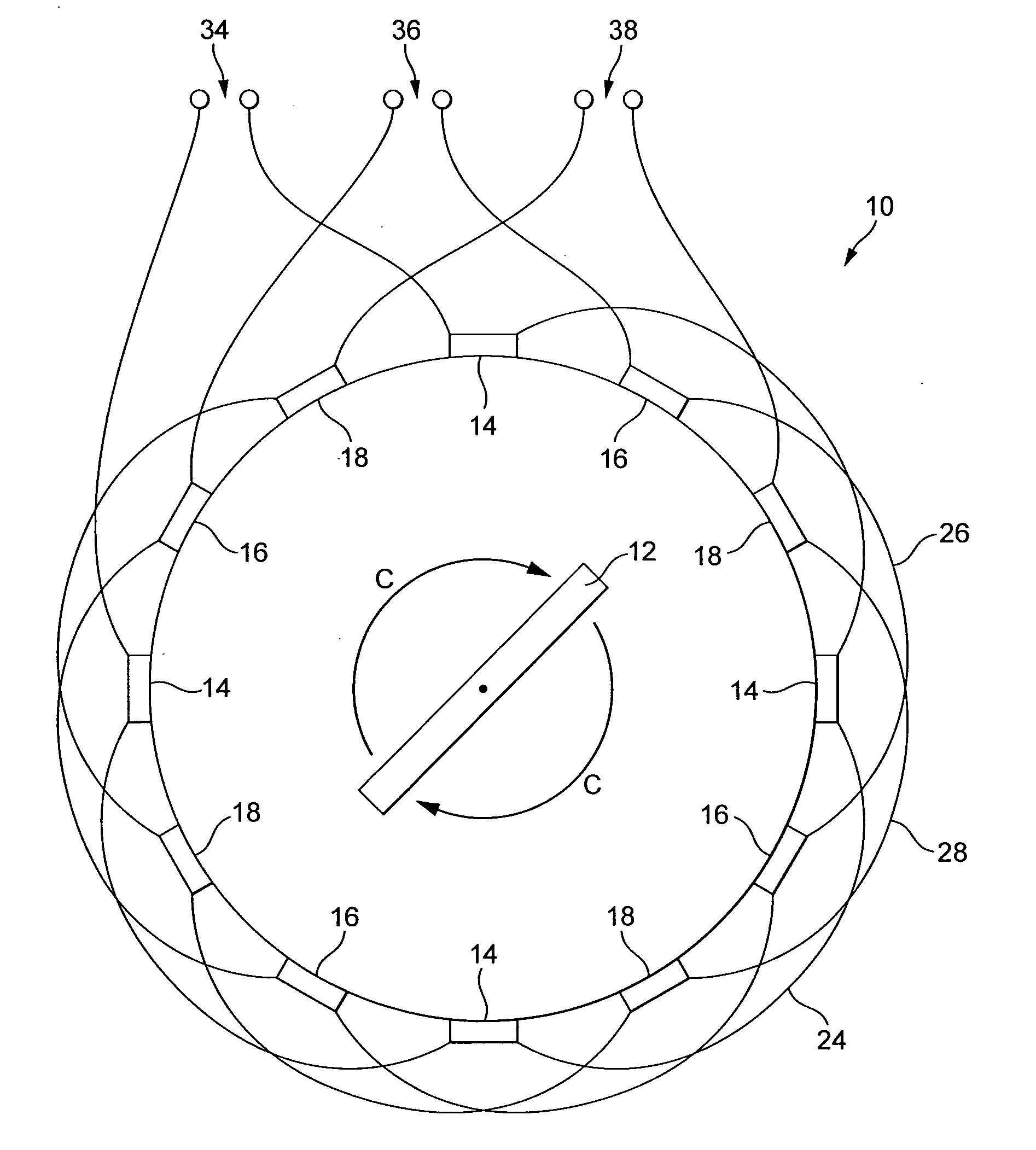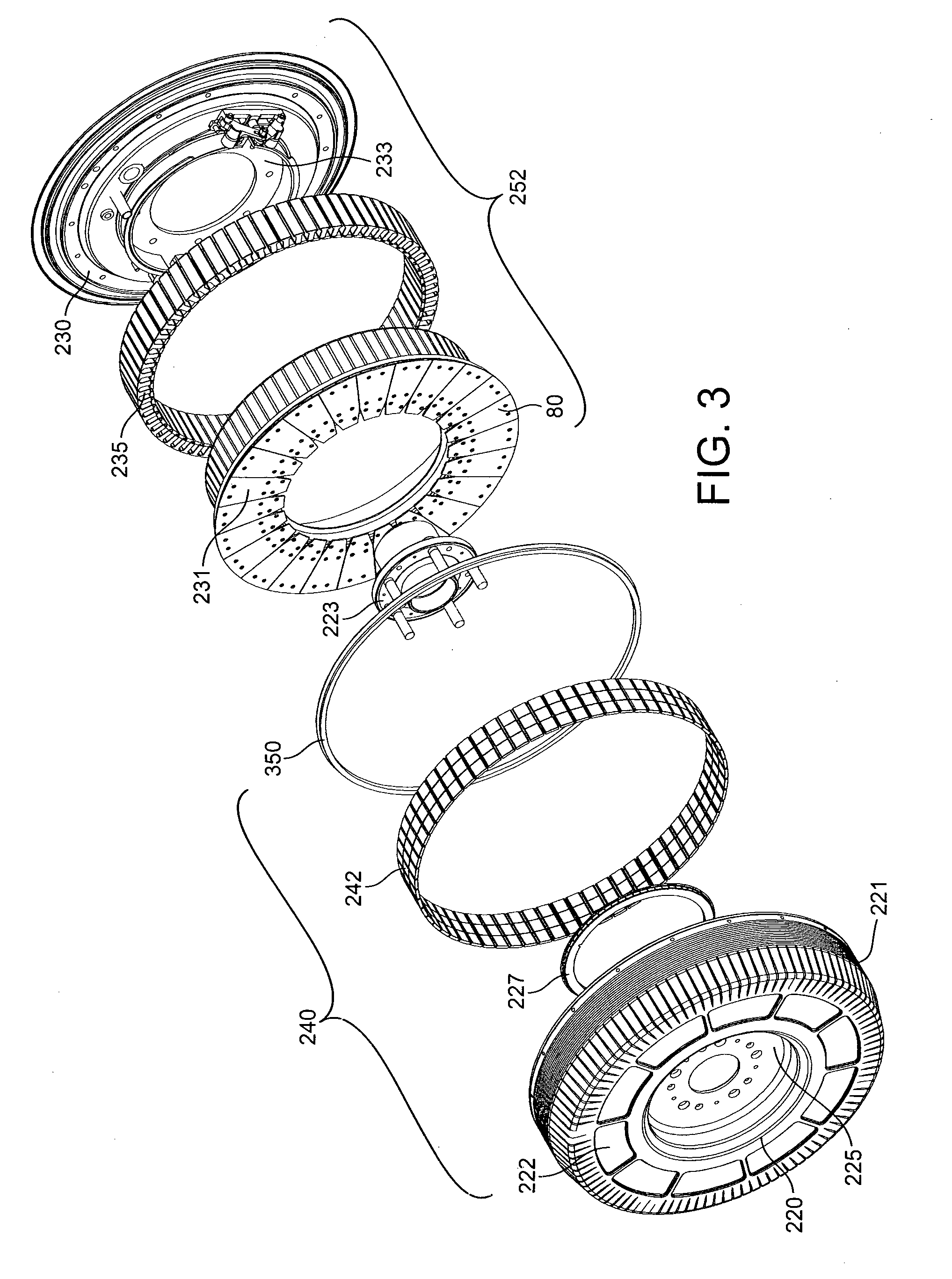Electric motors
a technology of electric motors and motors, applied in the direction of electric energy management, electric devices, driver interactions, etc., can solve the problems of increased electromagnetic interference (emi) noise, reduced switching loss, and compounded problem of switching speed and emi noise, so as to protect the seal from excessive wear and tear
- Summary
- Abstract
- Description
- Claims
- Application Information
AI Technical Summary
Benefits of technology
Problems solved by technology
Method used
Image
Examples
Embodiment Construction
[0091]The embodiment of the invention described is an electric motor for use in a wheel of a vehicle. The motor is of the type having a set of coils being part of the stator for attachment to a vehicle, radially surrounded by a rotor carrying a set of magnets for attachment to a wheel. For the avoidance of doubt, the various aspects of the invention are equally applicable to an electric generator having the same arrangement. In addition, some of the aspects of the invention are applicable to an arrangement having the rotor centrally mounted within radially surrounding coils.
Physical Arrangement
[0092]The physical arrangement of the embodying assembly is best understood with respect to FIGS. 3 and 4. The assembly can be described as a motor with built in electronics and bearing, or could also be described as a hub motor or hub drive as it is built to accommodate a separate wheel.
[0093]Referring first to FIG. 3, the assembly comprises a stator 252 comprising a rear portion 230 forming ...
PUM
| Property | Measurement | Unit |
|---|---|---|
| intrinsic current handling capabilities | aaaaa | aaaaa |
| voltage | aaaaa | aaaaa |
| voltage | aaaaa | aaaaa |
Abstract
Description
Claims
Application Information
 Login to View More
Login to View More - R&D
- Intellectual Property
- Life Sciences
- Materials
- Tech Scout
- Unparalleled Data Quality
- Higher Quality Content
- 60% Fewer Hallucinations
Browse by: Latest US Patents, China's latest patents, Technical Efficacy Thesaurus, Application Domain, Technology Topic, Popular Technical Reports.
© 2025 PatSnap. All rights reserved.Legal|Privacy policy|Modern Slavery Act Transparency Statement|Sitemap|About US| Contact US: help@patsnap.com



